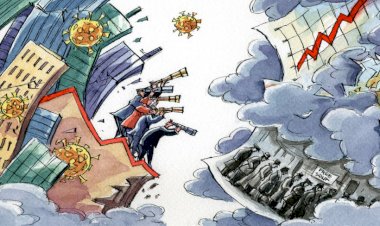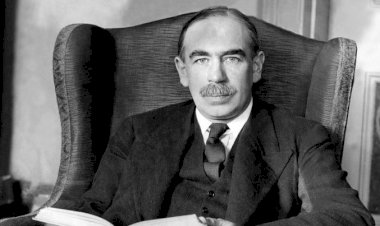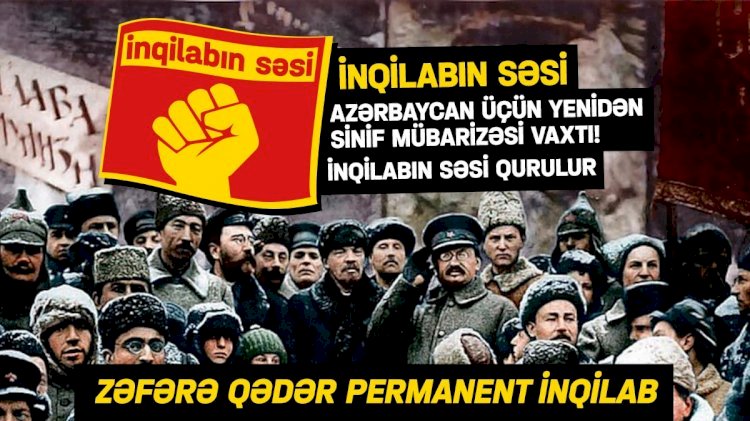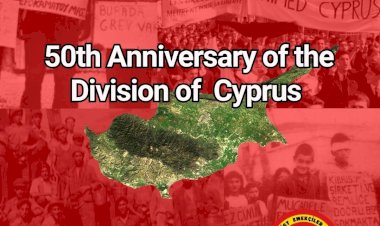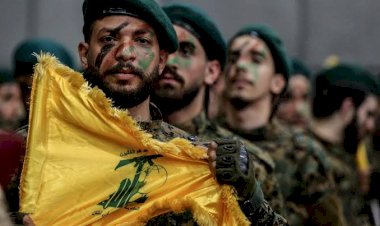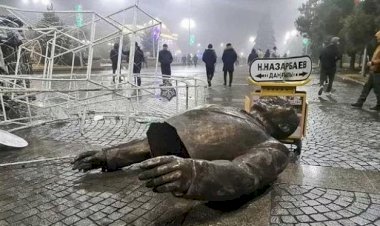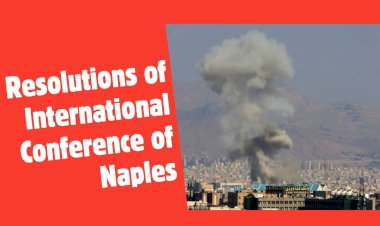From Narodism Until the Present: Petty Bourgeois Radicalism and Armed Reformism
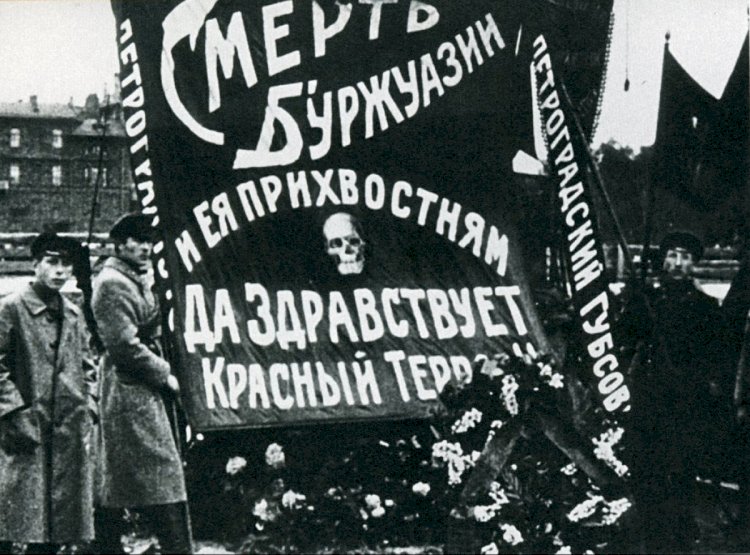
Every social class adopts its own class struggle instruments and methods from its class environment . In a word, the path, the method and instruments are determined by the relations of production. The material conditions marks out the limits of power and weakness. The actions and instruments used by each classes different from each other .
For instance, workers having to sell their labor power to live confront their bosses to whom they sell their labor power. The means/instruments and forms of the struggle the workers use against them are determined by the production process itself: slowdown strikes, trade unions, workplace committees, workers’ councils, demonstrations, rallies, occupations, general strike and ultimately workers’ militias formed on the eve of a workers’ uprising… These instruments and methods are the result of the concentration of the working class in the production centers, its producer power and ability to act collectively. It should be noted that this power and capacity is a potential, it is not revealed in all situations. Organization, class consciousness and action all together form a chain. But this chain does not always rise up; it is full of peaks and troughs. What is certain is that the uncompromising class conflict compels workers to struggle and in this regard, the working class has a tendency to reveal its potential.
The characteristic of the working class as a collective subject is the critical point. The working class must unite in order to succeed in all its struggles it undertakes against the capitalists- from the simplest and most recent to the most historical and ultimate. A fight for wages in a single workplace requires discipline and organized unity of the workers only in that very workplace but a national scale resistance requires the unity of the workers in a whole country; and a struggle to extinguish the wage slave system necessitates the international unity of the working class. Qualities such as unity, collectivity, discipline and internationalism potentially exist in the working class and the conditions force workers to acquire these qualities during the struggle.
The big bourgeoisie is the dominant class in capitalist system as it is the owner of the means of production. They own the money which is the main source of the power in capitalism. The state is inherently the bourgeois state; it is the executive committee of the bourgeoisie, its guardian and the general regulator of the system. Laws, courts, law enforcement officers, the monopoly of violence and penalty, education system, media, mafia, institutional religion etc. are all subservient to the bourgeoisie. Various bourgeois parties, the parliament and all governments always do their parts for the bourgeoisie. International organizations such as NATO, EU and IMF exist for the international interests of the imperialist system. Capitalists who do not constitute even 1% of the total population grow their strength upon this enormous power. Just like the ruling classes of the past, the bourgeoisie will not withdraw from their power easily. When revolutionary possibilities arise, their democracy mask slips. Anti-democratic practices, coups, wars, foreign interventions, massacres, even fascist dictatorships… History has shown countless times that the bourgeoisie will not hesitate to risk all this.
Between the capitalists and the proletariat, there is the layer of petty bourgeoisie which is getting weaker with each passing day. Conditions of the capitalist system make it more and more difficult for the petty bourgeoisie to remain alive in the presence of the capitalists. Small business owners have no chance to compete with all-pervading giant chain markets, small peasants are rapidly vanishing, and middle class professions- such as advocacy, architecture, and engineering- are rapidly losing their privileges and becoming proletarian. This situation causes petty bourgeoisie layers to react and radicalize against the system. And it is usually a right wing radicalization. The source of the anti-capitalist demagogy in fascism and Islamism is the petty bourgeoisie’s jealousy and impotency against the big bourgeoisie. There is also a leftist version of the petty bourgeois radicalism. In this version, intellectuals and semi-intellectuals have the leading role; the traditional petty bourgeoisie is on the back burner. The cradle of them is the academia; university students and academics, as well as professionals and intellectuals who also graduated from higher education organize anti-systemic anger in their own ways.
The more left strength of the petty bourgeoisie comes to the forefront the more it attracts large student groups, the scattered members of the middle class, the unemployed and, in some places, unorganized groups of workers. However, the petty bourgeoisie, similar to its social weakness, lacks effective class instruments and methods. It has no means of the working class in its struggle against the system. The working class at the heart of the system that generates life is a collective class; it has the ability to paralyze the entire economy and take over the control. For instance, all major economic units and transportation-communication means such as roads, factories, the weapon industries, banks, ports and airports are in the working class’ hand. Most importantly, the strikes and other actions of the working class are tremendous schools for the laborers. The working class gets politically radicalized during actions and the vanguard workers become the revolutionary engine in these processes. As it can be result in defeats or victories, the process can also evolve into a leap forward. When the necessary radicalism and organizational capacity come to the ground, the pressure of millions of laborers make the armed forces of the bourgeois state to dissolve and change sides. Mass general strikes herald the radical leftward shift of the society and emergence of workers’ self-governance organs. This is how the proletariat make the revolutionary move.
However, the petty bourgeoisie does not have such social powers. The boycott of the students does not harm the system; if the tradesmen take down the stutters, they will only harm themselves; the limits of the protests are obvious. This weakness is a kind of state of despair, which is the origin of adventurousness. Radicalized elements often start planning sensational actions in small groups to find a solution. The radicalism of the intellectuals does not have any difficulty in generating theories that legitimize these actions in order to justify their methods. The main arguments are that oppression (or fascism) cannot be defeated otherwise, they are the most revolutionary and they will awaken the people with sensational actions (armed propaganda, vanguard war, etc.) It is not coincidental that very different organizations and traditions in many countries have produced the same “theories” since the 19th century. This situation is related to the objective position of petty bourgeoisie in society. Thus, petty bourgeois radicalism emerges with a practice and tradition of struggle.
Frequently, a dedicated and determined core cadres with a secret organization tries to have a victory through short-cuts and use non-working class methods such as individual terrorism, guerillaism, adventurism and putschism, which are often useful for the ruling class and sometimes even used by them. Throughout the history of the class struggle, such organizations have been used or directly manipulated by secret service. Because, sensational actions can turn into useful means for the ruling class to influence the agenda and the balances of the class struggle. For example, Yevno Azef, the leader of the military wing of the Narodnics, which is the main actor of the tradition of armed intellectuals in Russia before 1917, was secret service member of the Tsar and was even responsible for the assassination of the minister of the department that employer. The 17 November Organization, which carried out many sensational actions in a period of nearly 30 years, collapsed in 2002 due to the fact that their its ties with the Greek state were revealed. We can give various examples. Since the system is not up to this or that person, the ruling classes have always known well sacrificing a person or another, frightening people with the dust, fire and blood of bomb attacks.
The Program of Petty Bourgeois Radicalism: Armed Reformism
Along with these methods of petty bourgeois radicalism, our people have a heroic rhetoric and strong romance. The philosophical background is not materialism, but philosophical idealism. The main motivation is a metaphysical revolutionary will. Accordingly, the class struggle is disregarded; the workers cannot be seen more than passive supporters. The advocates of petty bourgeois radicalism are always in great competition with proletarian revolutionism. Ultimately, this alienation to the working class struggle and competition with proletarian revolutionaries is reflected in the political program of the petty bourgeois radicalism. It is opposed to the establishment of workers’ power revolution, just like in the examples of Turkey and all around the world. Under the name of democratic, popular revolution etc.; they have a populist world view that does not transcend the horizon of capitalism, based on class collaboration and in many cases playing upon people’s reactionary feelings. This is why it is not difficult for them to compromise with the system. In other words, the radicalism in the image (armed propaganda) conceals the intrinsic moderation-banality. Lenin called this tradition in Russia as “armed reformism”; Trotsky call them “liberals with bombs”. The compromises that these groups made with the bourgeoisie each time they sat around the table reveals that they have never been detached from the system. It is a universal situation for guerilla organizations to use the weapon as a bargaining chip to bring the state to the table. Recently, the process after the agreement between the FARC and the Colombian state revealed the reality that the FARC guerillas in Colombia (they were appreciated by some of the socialists in Turkey) do not actually have any radicalism beyond social democrats. When the blood revenge with the state cools down, these groups have no significance and there is no trace of radicalism.
Since the years when the Cold War began to end, it has become obvious how impotent the petty bourgeois radicalism is. When guerilla organizations provided the support of the peasant, they were taken serious by the states and the negotiations and compromises made proved the petty bourgeois character of the organization leadership and their programs. The Sandinistas in Nicaragua, the Zapatistas in Mexico or Maoists in Nepal… It should also be noted that the most known examples of guerilla organizations in Turkey have similar political programs. It is not surprising that none of them defend the proletarian revolution and workers’ power and most of them are currently under the PKK and its political program of democratic republic. In other words, although this tradition is referred to as “petty bourgeois revolution”, the “revolution” of these petty bourgeois tendencies becomes quite questionable if we define revolution as a break from the capitalist system. For this reason, it would be truer to call it “petty bourgeois radicalism” instead of petty bourgeois revolution and that will prevent confusion.
The petty bourgeois radicals see themselves as the savior heroes of the people. Indeed, urban or rural guerilla activities cannot be performed by the ordinary people. In addition, the social reality of the working people does not correspond at all to these actions. Consequently, this understanding of heroism inevitably shapes elitism. The real revolution, on the other hand, can be put into practice by the working masses with class consciousness. The movement of the heroes on behalf of the people relies mostly on the passive support of the people and it serves a regression in class consciousness as such. As Trotsky said, this form of struggle “belittles the role of the masses in their own consciousness, reconciles them to their powerlessness, and turns their eyes and hopes towards a great avenger and liberator who some day will come and accomplish his mission.” “The anarchist prophets of the ‘propaganda of the deed’ can argue all they want about the elevating and stimulating influence of terrorist acts on the masses. Theoretical considerations and political experience prove otherwise.” Again, to refer to the words of Trotsky: “But the smoke from the confusion clears away, the panic disappears, the successor of the murdered minister makes his appearance, life again settles into the old rut, the wheel of capitalist exploitation turns as before; only the police repression grows more savage and brazen.*”
This movement finds its militants among the non-proletarian younger generation and semi-intellectuals taken a fancy to heroism, adventure, elitism and romance. This allure is even more impressive in times when the class struggle is weak. A long-lasting, forbearing struggle that is on the beat with the rhythm of class struggle in the direction of scientific socialism is quite tough. This challenge is more severe in times of defeats. But at the times when the struggle of the working class is on the rise and revolutionary Marxist parties are active, these youth fractions and even a large sector of the petty bourgeoisie will begin to gather under the same banner of the proletariat.
Intellectual radicalism abstracts the conditions and the passivity of the working class from its historical moment of defeat and make big generalizations from it; and thinks that this situation will never change. Marx’ assertion that the proletariat is the first and only class capable of paving the way to a classless society and having an interest from it is ignored. Thus, the creative and dynamic power of the masses is disregarded. Now, there is only one way left: the incorrigible, idealistic voluntarism. Being alienated from all material realities, it is believed that the power of armed action of a small minority is omnipotent. In this way, it becomes an obligation to constantly glorify the actions that they call as revolutionary movement, because members of this movement can only be satisfied in this way. Theory and class struggle are underestimated and reading is seen as a waste of time. On the other hand, they use the use the Marxism and Leninism because of the respectability of them, but what they actually do is to dilute the ideology. So, it becomes difficult for the young generations to understand the difference between petty bourgeois radicalism and scientific socialism; and this deal a bow to Marxism.
Traditions of Blanqui, Bakunin, Narodnism and Marxism
It was Karl Marx who put the proletarian revolution against the petty bourgeois radical movements. Young Marx and Engels had to make a counterclaim to this traditions from the very beginning. They had to make a great effort to defeat Proudhon, Blanqui and Bakunin in ideological and organizational terms.
Auguste Blanquie planned to make a coup d’etat with the secret organization he found in France and attempted this several times. Neither the central role of the working class nor the importance of the mass struggles was newsworthy for him. According to him, direct armed action by a specialized, disciplined underground organization would lead to the revolution. Although he failed in such attempts, his heroic method influenced many political circles and impressed the 19th century’s French left. That’s why Marx constantly put forward the principle that “the working class could emancipate itself only through its own efforts” and he insisted on the moving force of the masses and the proletariat’s role as the leading subject. For example, in the foundation declaration of the 1st International, Marx and Engels made efforts beyond measure to make the socialism from below to be accepted and socialism from above to be disclaimed. Blanquism, the most significant power in the Paris Commune, had a great share in the defeat of Commune with all its mistakes and it fell into a decline since then. With the development of the organized labor movement, the rise of Marxism will be the causal factor.
The most influential movement in the Paris Commune after Blanquism is Proudhonist anarchism. However, Proudhonism, a very typical petty bourgeois reactiveness, is strongly against radical actions. But for the Bakuninist anarchism the situation is the other way around. Anarchist groups inspired by him carried out many ranking assassinations in Europe and the USA in the late 19th and early 20th centuries. Among those are murdered with these assassinations, there were a president of USA and various kings in Europe. Yet, the death of these names did no change the system. On the contrary, the capitalists used them as excuses to suppress the workers’ movement. While Marx and Engels condemned Bakunin, they castigated his conspiratorial and adventurous sides.
Narodnism was the petty bourgeois radical movement in Russia. It had been a legendary movement that lived in Russia for many years with its successful armed attacks and political tradition. If the 1917 never happened, they would put their stamp on history forever. As a matter of fact, we can say that the Narodnic tradition should have been a role model for the left guerilla groups in Turkey. Considering the members of this movement; most of them came from layers as intellectuals, middle-upper classes and students. They also aspired to move on behalf of the people and free them from Tsarist tyranny. They grounded on the peasantry, the most oppressed and outnumbering social stratum of that time. But, they came up against the tragedy of “for the people, against the people” and the villager handed them in armed forces. Following the failure of the attempts to win the peasants, they began direct armed attacks that would supposedly awaken the people. For a part the youth, what was put forward with that actions and the ever-glorified popular heroism was very attractive. They were executing armed-bomb attacks to the senior representatives of the tsarist regime, sometimes even on the tsar himself; they were using assassinations, bomb attacks and sabotages etc. In one of these attacks, they achieved to kill the tsar. Of course, in the murdered Tsar Alexander II’s stead, Alexander III came; contrary to what was supposed, there happened no “uprising” among the people and the tsarist regime had not been harmed. Furthermore, the tsarist despotism took the opportunity to intensify its pressure and crush the social opposition through these attacks. Lenin’s brother was caught and executed while planning such an attack against the new tsar. Typical romanticism formed by scarification and heroism is the characteristic of Narodnism. Such that a bourgeois journalist who came to Siberia from USA and spent a month among the Narodnics in their camp to narrate his readers how the worldwide known Narodnics were villain people bid farewell to these heroes in tears. However, with the emergence of the modern proletariat and workers’ movement in Russia, Marxism gained strength; the most sophisticated elements among the young intellectuals such as Lenin and Trotsky, who started politics with sympathy for Narodnism, became Marxist. While Lenin and the Bolsheviks adopted the dedication culture of the Narodnic militants, they have shaped a new tradition in which revolutionary dedication in the struggle of the working class.
Narodnism started to drop off the map in 1917. The revolutionary movement didn’t calm down after the collapse of tsarism in February 1917; the workers kept fighting for socialism. Yet, the Narodnics were lagged behind in the revolutionary movement since they did not foresee a socialist revolution in Russia. Thoroughly weakened bourgeoisie, aristocrats and imperialists relied upon the Narodnics they once called them as terrorists and sent them to the gallows to stop the workers from a socialist revolution. The last bourgeois government which is overthrown by the Bolsheviks in October was the Kerensky’s led by the Narodnics. He proved that he was the enemy of the people during his power. The Narodnics, who were the representatives of the petty bourgeoisie, sided against the revolution when the working class seized power with the October Revolution. A large number of them enlisted to the White Army, they even executed an assassination against Lenin. (Lenin continued his life with the effect of this bullet on his head until his death.) As can be seen, the struggle against petty bourgeois radicalism had an important place in the Bolsheviks’ historical advance.
1968 and After
Although Marxists wiped out Narodnism in the October Revolution and the following civil war, the petty bourgeois radicalism came back in the 1960s as a stronger and global wave. Ironically, petty bourgeois radicalism was presenting itself not as anarchist or Narodnic, but as “the most” Marxist-Lenninist of all. This is on Stalinism’s hands. USSR was degenerated by Stalinism and turned into a part of the world status quo. Communist Parties contingent upon the USSR had become the biggest obstacles to the working class, let alone leading revolutions. In this case, the student-intellectual movement started to draw its own radical path against the bureaucrats of the Communist Parties, cohesion with the order and the restraint of the workers’ movement. Blanqui, Bakunin and the Narodnics lagged behind; yet their traditions would come back with the same arguments and methods, this time under a different banner. The ongoing national liberation movements (Palestine, Vietnam, Algeria) and the misreading of the Cuban and Chinese experiences have led to critical illusions that revolutions would begin immediately with guerilla struggle. The revolutionary student movement set their sights on far rural areas while there was a worker uprising on 15th -16th June 1970, in Turkey. For them, “the Anatolia was ready to ignite”; the revolutionary vanguard’s sparking with direct armed action was enough for the people to awaken. The revolutionary youth, at that time and conditions, hadn’t had the means to analyze and draw the necessary conclusions of the Marxist Leninism’s struggle against the petty bourgeois radicalism. If the guerillas were to resolve the matter, why bother with the need for the working class, its party and program (i.e. Marxism and Leninism)?
In the following years, petty bourgeois radicalism, which got very disappointed with Stalinism and especially Maoism, put the blame on Marxism and the working class for a while. The Western intellectual radicals and academics of the ‘68 generation, who quickly lost interest in Marxism, turned to identity-culture leftism and founded postmodernism. Imperialist capitalism gave great support to this. “Marxism is authoritarian”, “the working class is consumer”, “it is dead”, “power corrupts”, “mega narratives are poor” etc. These are very pleasant and useful ideas for imperialist capitalism. And they were supported, of course.
On the other hand, guerilla organizations representing the petty bourgeois radicalism haven’t had survivability since the 1980s. Exceptions could only result in fiasco. Even in Turkey’s unique conditions they experienced different path of development, we experienced similar things in broad historical spectrum. The petty bourgeois radicalism has lost much power in Turkey, too. Insistence on the same course of actions, with obvious traumatic consequences, drove one generation after another into pessimism and break from politics. Many other examples of petty bourgeois radicalism have united under the umbrella of the postmodern identity politics, in accordance with the phrase of “liberals with bombs”. On the other hand, the petty bourgeois radicalism, with its strong traditions and ideological influence area, sustains to be a false consciousness and a distractor that should be taken seriously.





